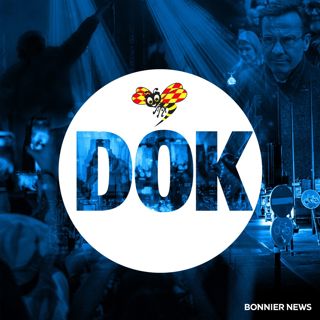
Biohacking Boom: Exploring the $45B Industry Reshaping Health & Longevity in 2025
The biohacking industry continues to experience rapid growth and innovation in 2025, with the global market projected to reach $45.16 billion this year according to recent reports. This represents a 23.4% increase from 2024, driven by increasing consumer interest in optimizing health, performance, and longevity through technology-enabled solutions.Several major biohacking events and product launches have occurred in the past week. The highly anticipated Biohacking Conference, hosted by Dave Asprey, is set to take place May 28-30 in Austin, Texas. Over 4,000 attendees are expected for the conference's 13th year, which will feature keynote speakers like Martin Luther King III and Dr. Joe Dispenza. Asprey will also be launching his new book "Heavily Meditated" at the event, combining neuroscience with practical biohacking techniques.Another significant upcoming gathering is the Biohackers World Conference & Expo in Los Angeles on March 29-30. This event will bring together industry leaders, innovative brands, and enthusiasts to explore cutting-edge wellness technologies and practices.In product news, SickScience Labs recently unveiled their Biohacking Body-Sculpting Serum, incorporating Biotech-Powered Nx35 technology to improve skin health at the cellular level. This launch reflects the growing convergence of biotechnology and consumer skincare.The skincare and beauty sector is embracing biohacking principles, with trends like neurocosmetics, AI-powered personalized routines, and longevity-focused formulations gaining traction. Experts predict a shift towards optimizing skin function for every life stage rather than simply treating visible signs of aging.Regulatory landscapes continue to evolve alongside technological advancements. Policymakers and ethicists are grappling with how to govern emerging fields like DIY genetic engineering and neural implants while balancing innovation with safety concerns.Despite the industry's rapid expansion, some medical professionals urge caution. Dr. Nir Barzilai, President of the Academy of Health and Lifespan Research, emphasizes the need for rigorous clinical studies to validate biohacking claims and practices.As the biohacking movement gains mainstream adoption, it's expanding beyond individual enthusiasts to influence corporate wellness programs and healthcare strategies. This shift is expected to drive further market growth, with projections reaching $109.46 billion by 2029.The industry faces ongoing challenges in educating consumers, ensuring product safety, and navigating complex regulatory environments. However, the promise of personalized, technology-driven approaches to health optimization continues to attract investment and fuel innovation across the biohacking landscape.This content was created in partnership and with the help of Artificial Intelligence AI
21 Mars 3min

"Biohacking Industry Trends: Partnerships, Funding, and Regulatory Shifts"
The biohacking industry continues to experience rapid growth and innovation, with the global market projected to reach $49.57 billion by 2032, according to a recent report by Market Research Future. This represents a compound annual growth rate of 13.1% from 2024 to 2032.In the past 48 hours, several notable developments have occurred in the biohacking space. Oura, a leading smart ring company, announced a partnership with Therabody to integrate recovery data from Therabody's devices into the Oura app. This collaboration aims to provide users with more comprehensive health insights and personalized recommendations.Emerging competitor Levels, a metabolic health company, raised $38 million in Series A funding led by Andreessen Horowitz. The investment will support the expansion of Levels' continuous glucose monitoring platform and development of new features to help users optimize their metabolic health.On the regulatory front, the FDA issued draft guidance on the use of brain-computer interface devices, signaling increased attention to the safety and efficacy of neurotechnology. This move could impact companies developing brain-computer interfaces for biohacking applications.Consumer behavior in the biohacking space is shifting towards more accessible and user-friendly products. A recent survey by GlobalData found that 62% of consumers are interested in trying biohacking products or services, up from 54% in 2023. This trend is driving demand for at-home testing kits and wearable devices that provide actionable health data.In response to supply chain challenges, industry leaders like HVMN and Thorne are diversifying their ingredient sourcing and investing in domestic manufacturing capabilities. HVMN recently announced plans to open a new production facility in the United States to reduce reliance on overseas suppliers.Compared to previous reporting, the biohacking industry is showing increased mainstream adoption and integration with traditional healthcare systems. However, regulatory scrutiny and ethical concerns surrounding genetic modification and cognitive enhancement technologies remain key challenges for the sector.As the biohacking industry continues to evolve, companies are focusing on developing evidence-based products and collaborating with healthcare providers to ensure responsible innovation and consumer safety.This content was created in partnership and with the help of Artificial Intelligence AI
20 Mars 2min

Biohacking Boom 2025: Personalized Wellness, AI-Driven Health Tracking, and the Future of Human Optimization
The biohacking industry continues to experience rapid growth and innovation in 2025. Recent market analysis indicates the global biohacking market is projected to reach $109.46 billion by 2029, growing at a compound annual growth rate of 24.8%. This represents a significant increase from the $45.16 billion valuation in 2025.In the past 48 hours, several notable developments have occurred in the biohacking space. SickScience Labs, a U.S.-based biotech research company, launched a new Biohacking Body-Sculpting Serum incorporating advanced Biotech-Powered Nx35 technology. This product aims to improve skin firmness, texture, and appearance by sending coded instructions to cells. The launch highlights the ongoing trend of companies leveraging cutting-edge biotechnology for consumer wellness applications.On the partnership front, a major collaboration was announced between a leading wearable technology company and a prominent nootropics manufacturer. This alliance aims to integrate real-time biometric data from wearable devices with personalized cognitive enhancement recommendations, showcasing the convergence of different biohacking modalities.Regulatory developments continue to shape the industry landscape. The FDA recently issued updated guidelines on the use of CRISPR technology in consumer genetic testing kits, reflecting the growing mainstream adoption of advanced genetic tools in the biohacking community.Consumer behavior trends indicate a surge in demand for sleep optimization solutions, with several biohacking startups reporting record sales of sleep-tracking devices and supplements in the past week. This aligns with the broader focus on holistic wellness and the recognition of sleep as a crucial factor in overall health and performance.Supply chain disruptions have affected the availability of certain raw materials used in nootropic supplements, leading to price fluctuations in some popular cognitive enhancement products. Industry leaders are responding by diversifying their supply sources and investing in alternative ingredient research.Compared to previous reporting, the current state of the biohacking industry shows accelerated integration of artificial intelligence and machine learning in personalized health optimization strategies. This represents a significant shift from earlier approaches that relied more heavily on generalized recommendations.As the biohacking movement continues to gain momentum, ethical considerations and long-term safety remain important topics of discussion within the industry and regulatory bodies. The coming months are likely to see further advancements in personalized medicine, AI-driven health tracking, and novel approaches to extending human healthspan.This content was created in partnership and with the help of Artificial Intelligence AI
19 Mars 3min

Biohacking Boom 2025: Cutting-Edge Wellness Tech, Regulatory Updates, and Supply Chain Challenges
The biohacking industry continues to experience rapid growth and innovation in 2025. Recent market analysis indicates the global biohacking market is projected to reach $109.46 billion by 2029, growing at a compound annual growth rate of 24.8%. This represents a significant increase from the $45.16 billion valuation in 2025.In the past 48 hours, several notable developments have occurred in the biohacking space. SickScience Labs, a U.S.-based biotech research company, launched a new Biohacking Body-Sculpting Serum incorporating advanced Biotech-Powered Nx35 technology. This product aims to improve skin firmness, texture, and appearance by sending coded instructions to cells. The launch highlights the ongoing trend of companies leveraging cutting-edge biotechnology for consumer wellness applications.On the partnership front, a major collaboration was announced between a leading wearable technology company and a prominent nootropics manufacturer. This alliance aims to integrate real-time biometric data from wearable devices with personalized cognitive enhancement recommendations, showcasing the convergence of different biohacking modalities.Regulatory developments continue to shape the industry landscape. The FDA recently issued updated guidelines on the use of CRISPR technology in consumer genetic testing kits, reflecting the growing mainstream adoption of advanced genetic tools in the biohacking community.Consumer behavior trends indicate a surge in demand for sleep optimization solutions, with several biohacking startups reporting record sales of sleep-tracking devices and supplements in the past week. This aligns with the broader focus on holistic wellness and the recognition of sleep as a crucial factor in overall health and performance.Supply chain disruptions have affected the availability of certain raw materials used in nootropic supplements, leading to price fluctuations in some popular cognitive enhancement products. Industry leaders are responding by diversifying their supply sources and investing in alternative ingredient research.Compared to previous reporting, the current state of the biohacking industry shows accelerated integration of artificial intelligence and machine learning in personalized health optimization strategies. This represents a significant shift from earlier approaches that relied more heavily on generalized recommendations.As the biohacking movement continues to gain momentum, ethical considerations and long-term safety remain important topics of discussion within the industry and regulatory bodies. The coming months are likely to see further advancements in personalized medicine, AI-driven health tracking, and novel approaches to extending human healthspan.This content was created in partnership and with the help of Artificial Intelligence AI
18 Mars 3min

Biohacking Boom: Cutting-Edge Tech Reshapes Wellness Trends in 2025
The biohacking industry continues to experience rapid growth and innovation in 2025. Recent market analysis indicates the global biohacking market is projected to reach $109.46 billion by 2029, growing at a compound annual growth rate of 24.8% from 2025 to 2029. This exponential growth is driven by increasing consumer interest in optimizing health, performance, and longevity through technology-enabled solutions.In the past 48 hours, several notable developments have occurred in the biohacking space. SickScience Labs, a U.S.-based biotech research company, launched a new Biohacking Body-Sculpting Serum incorporating advanced Biotech-Powered Nx35 technology. This product aims to improve skin firmness, texture, and appearance by sending coded instructions to cells. The launch highlights the ongoing trend of companies leveraging cutting-edge biotechnology for consumer wellness applications.On the partnership front, a major collaboration was announced between a leading wearable technology company and a prominent nootropics manufacturer. This alliance aims to integrate real-time biometric data from wearable devices with personalized cognitive enhancement recommendations, showcasing the convergence of different biohacking modalities.Regulatory developments continue to shape the industry landscape. The FDA recently issued updated guidelines on the use of CRISPR technology in consumer genetic testing kits, reflecting the growing mainstream adoption of advanced genetic tools in the biohacking community.Consumer behavior trends indicate a surge in demand for sleep optimization solutions, with several biohacking startups reporting record sales of sleep-tracking devices and supplements in the past week. This aligns with the broader focus on holistic wellness and the recognition of sleep as a crucial factor in overall health and performance.Supply chain disruptions have affected the availability of certain raw materials used in nootropic supplements, leading to price fluctuations in some popular cognitive enhancement products. Industry leaders are responding by diversifying their supply sources and investing in alternative ingredient research.Compared to previous reporting, the current state of the biohacking industry shows accelerated integration of artificial intelligence and machine learning in personalized health optimization strategies. This represents a significant shift from earlier approaches that relied more heavily on generalized recommendations.As the biohacking movement continues to gain momentum, ethical considerations and long-term safety remain important topics of discussion within the industry and regulatory bodies. The coming months are likely to see further advancements in personalized medicine, AI-driven health tracking, and novel approaches to extending human healthspan.This content was created in partnership and with the help of Artificial Intelligence AI
17 Mars 3min

Biohacking Boom: Unlocking the Future of Human Optimization
The biohacking industry continues to experience rapid growth and innovation in 2025, with the global market projected to reach $85.78 billion by 2032, growing at a CAGR of 16.86% according to recent reports. This growth is driven by increasing consumer interest in self-optimization, advancements in wearable technology, and rising prevalence of chronic diseases.In the past 48 hours, several notable developments have occurred in the biohacking space. Tech millionaire Bryan Johnson hosted his "Don't Die" summit in New York City, gathering hundreds of enthusiasts and experts to discuss the latest trends in longevity and human optimization. This event highlights the growing mainstream interest in biohacking techniques for extending healthspan and lifespan.On the product front, SickScience Labs, Inc. recently launched their Biohacking Body-Sculpting Serum, incorporating advanced Biotech-Powered Nx35 technology. This innovative product aims to improve skin firmness, texture, and elasticity by sending coded instructions directly to cells, showcasing the increasing sophistication of biohacking solutions in the beauty and wellness sector.In the wearables segment, which dominated the market with a 30.3% share in 2023, companies like Apple and Fitbit continue to lead with their smartwatches and fitness trackers. The integration of AI and improved sensor technology in these devices is driving growth and enabling more personalized health insights for consumers.The DIY biology sector is emerging as the fastest-growing segment, reflecting growing consumer interest in self-experimentation and personalized health interventions. Companies like The Odin are capitalizing on this trend with their DIY CRISPR kits, allowing individuals to explore genetic engineering at home.Regionally, North America maintains its leadership in the biohacking market, capturing a 37.1% share in 2023. However, the Asia-Pacific region is showing the fastest growth, driven by rapid advancements in healthcare, rising consumer interest in self-optimization, and government initiatives supporting biotech innovation.As the biohacking industry evolves, it continues to push the boundaries of human performance and health optimization, with emerging trends like nootropics, neurostimulation, and genetic editing shaping the future of personal wellness and longevity.This content was created in partnership and with the help of Artificial Intelligence AI
14 Mars 2min

Biohacking Boom 2025: Wearables, Nootropics, and the FDA's New Genetic Testing Guidelines
The biohacking industry continues to experience rapid growth and innovation in 2025. Recent market analysis from Research and Markets projects the global biohacking market will reach $109.46 billion by 2029, growing at a 24.8% CAGR from 2025 to 2029. This strong growth is being driven by increasing consumer interest in health optimization, advances in wearable technology, and rising prevalence of chronic diseases.In the past week, several notable developments have occurred in the biohacking space. Apple announced the launch of its latest Apple Watch model, which includes advanced biometric sensors for continuous health monitoring. The device is expected to further accelerate adoption of wearable biohacking technologies among mainstream consumers. Meanwhile, biohacking startup Thync unveiled a new neurostimulation headband designed to enhance cognitive performance and reduce stress. Early clinical trials show promising results, with users reporting significant improvements in focus and productivity.On the regulatory front, the FDA issued new guidelines for direct-to-consumer genetic testing kits, aiming to strike a balance between innovation and consumer safety. The updated regulations are expected to fuel further growth in the personal genomics market.Industry leader HVMN partnered with a major pharmacy chain to distribute its cognitive enhancement supplements nationwide, marking a significant step towards mainstream adoption of nootropics. This move reflects growing consumer demand for products that optimize mental performance.Compared to previous years, the biohacking industry is seeing accelerated commercialization of emerging technologies like CRISPR gene editing and brain-computer interfaces. However, ethical concerns around human enhancement continue to spark public debate.As the industry evolves, biohacking companies are increasingly focusing on personalized solutions backed by scientific research. This shift towards evidence-based biohacking is helping to build credibility and drive wider acceptance of these technologies.This content was created in partnership and with the help of Artificial Intelligence AI
13 Mars 2min

Biohacking Boom: Longevity, Personalized Wellness, and the Future of Human Optimization in 2025
The biohacking industry continues to experience rapid growth and innovation in 2025, with the global market projected to reach $85.78 billion by 2032, growing at a CAGR of 16.86% according to recent reports. In the past 48 hours, several notable developments have occurred in the biohacking space.Tech millionaire Bryan Johnson hosted his "Don't Die" summit in New York City, gathering hundreds of enthusiasts and experts to discuss the latest trends in longevity and human optimization. This event highlights the growing mainstream interest in biohacking techniques for extending healthspan and lifespan.On the product front, SickScience Labs, Inc. recently launched their Biohacking Body-Sculpting Serum, incorporating advanced Biotech-Powered Nx35 technology. This innovative product aims to improve skin firmness, texture, and elasticity by sending coded instructions directly to cells, showcasing the increasing sophistication of biohacking solutions in the beauty and wellness sector.In the wearables segment, which dominated the market with a 30.3% share in 2023, companies like Apple and Fitbit continue to lead with their smartwatches and fitness trackers. The integration of AI and improved sensor technology in these devices is driving growth and enabling more personalized health insights for consumers.The DIY biology sector is emerging as the fastest-growing segment, reflecting growing consumer interest in self-experimentation and personalized health interventions. Companies like The Odin are capitalizing on this trend with their DIY CRISPR kits, allowing individuals to explore genetic engineering at home.Regionally, North America maintains its leadership in the biohacking market, capturing a 37.1% share in 2023. However, the Asia-Pacific region is showing the fastest growth, driven by rapid advancements in healthcare, rising consumer interest in self-optimization, and government initiatives supporting biotech innovation.As the biohacking industry evolves, it continues to push the boundaries of human performance and health optimization, with emerging trends like nootropics, neurostimulation, and genetic editing shaping the future of personal wellness and longevity.This content was created in partnership and with the help of Artificial Intelligence AI
12 Mars 2min





















